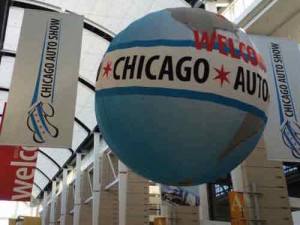Several book publishers contact me regularly to see if I’m interested in a review copy of new books, some know my interests and just send the book — like today’s.
I usually understand at least the title of the books, but today’s required a quick search to understand one word: Biophilic.
The biophilia hypothesis suggests that humans possess an innate tendency to seek connections with nature and other forms of life. Edward O. Wilson introduced and popularized the hypothesis in his book, Biophilia (1984). He defines biophilia as “the urge to affiliate with other forms of life”. (Wikipedia)
Ah…makes sense. People have since applied this hypothesis to the built environment. Here’s a trailer for a documentary on the subject:
Twice before I’ve posted about books by Timothy Beatley, in March 2005 I included his book Green Urbanism: Learning from European Cities in a post on my favorite urban books, in November 2013 I included a book he edited called Green Cities of Europe: Global Lessons on Green Urbanism in a post on new books on urban planning.
 In his latest book Beatley continues the green theme by applying Wilson’s biophilia hypothesis to cities.
In his latest book Beatley continues the green theme by applying Wilson’s biophilia hypothesis to cities.
What if, even in the heart of a densely developed city, people could have meaningful encounters with nature? While parks, street trees, and green roofs are increasingly appreciated for their technical services like stormwater reduction, from a biophilic viewpoint, they also facilitate experiences that contribute to better physical and mental health: natural elements in play areas can lessen children’s symptoms of ADHD, and adults who exercise in natural spaces can experience greater reductions in anxiety and blood pressure.
The Handbook of Biophilic City Planning & Design offers practical advice and inspiration for ensuring that nature in the city is more than infrastructure—that it also promotes well-being and creates an emotional connection to the earth among urban residents. Divided into six parts, the Handbook begins by introducing key ideas, literature, and theory about biophilic urbanism. Chapters highlight urban biophilic innovations in more than a dozen global cities. The final part concludes with lessons on how to advance an agenda for urban biophilia and an extensive list of resources.
As the most comprehensive reference on the emerging field of biophilic urbanism, the Handbook is essential reading for students and practitioners looking to place nature at the core of their planning and design ideas and encourage what preeminent biologist E.O. Wilson described as “the innate emotional connection of humans to all living things.” (Island Press)
One of the best ways to initially size up a new book is to review the table of contents:
Part I. The Power and Promise of Biophilic Cities
Chapter 1. The Power of Urban Nature: The Essential Benefits of a Biophilic Urbanism
Chapter 2. Placing Biophilic Cities: Planning History, Theory and the New Sustainability
Chapter 3. Urban Trends and Nature Trends: Can the Two Intersect?
Chapter 4. Biophilic Cities: Examining the Metrics and Theory
Part II. The Practice of Biophilic Urbanism: Cities Leading the Way
Chapter 5. Singapore: City in a Garden
Chapter 6. Wellington, NZ: Nature on the Edge
Chapter 7. Milwaukee: Greening the Rust Belt
Chapter 8. Birmingham: Health, Nature and Urban Regeneration
Chapter 9. Phoenix: The Promise of Biophilia in the Desert
Chapter 10. Portland: Nature in the Compact City
Chapter 11. San Francisco: From Park City to Wild City
Chapter 12. Oslo: The City of Forest and Fjord
Chapter 13. Vitoria-Gasteiz
Chapter 14. Global Survey of Cities: Shorter City Cases and Exemplars
Part III. Exemplary Tools, Policy Practices
Chapter 15. Detailed Profiles of Biophilic Design Tools Techniques, Design Ideas
Part IV. Successes and Future Directions
Chapter 16. Biophilic Cities in the Age of Climate Change: Mitigation, Resilience Through Nature
Chapter 17. What Can Be Learned From the Best Biophilic Cities?
Chapter 18. Key Obstacles to Biophilic Cities (And Ways To Overcome Them)
Chapter 19. Conclusions and Future Directions
The publisher also provides a link to a Google Books preview. It’s available in hardcover, softcover, and E-book formats.
— Steve Patterson



